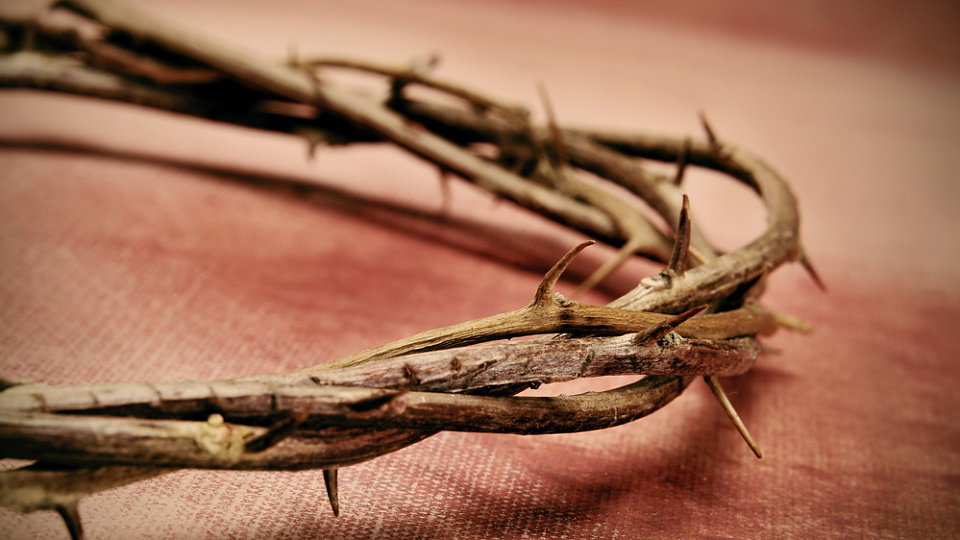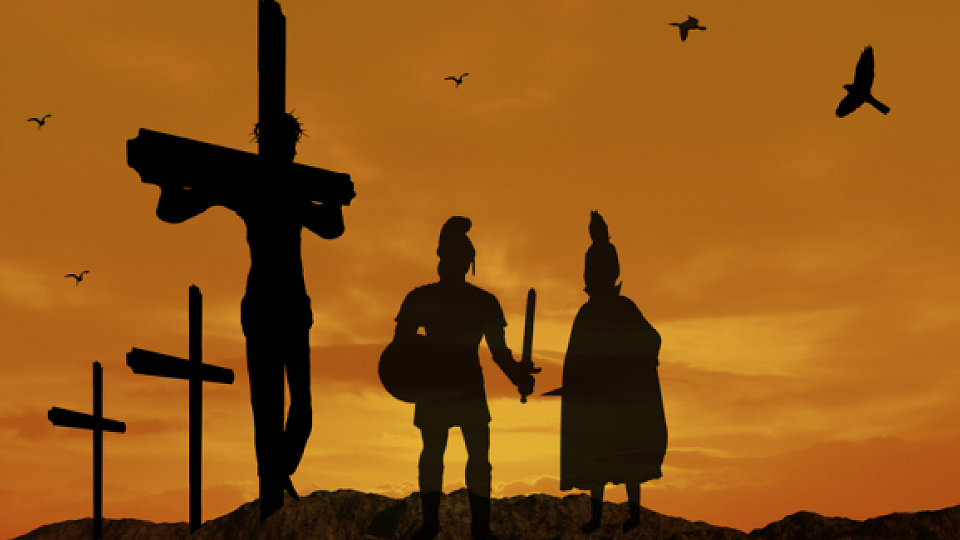The Crucifixion of the King
During this Lenten season, we have been reading through the Gospel of John together. I hope this Challenge has been a blessing to you. As we begin Holy Week, we now turn to Jesus’ final days leading up to and including his crucifixion. Each day this week, I’ll be posting excerpts from my latest book, John: The Gospel of Light and Life. The soldiers took Jesus prisoner. Carrying his cross by himself, he went out to a place called Skull Place (in Aramaic, Golgotha). That’s where they crucified him—and two others with him, one on each side and Jesus in the middle. Pilate had a public notice written and posted on the cross. It read “Jesus the Nazarene, the king of the Jews.” Many of the Jews read this sign, for the place where Jesus was crucified was near the city and it was written in Aramaic, Latin, and Greek. (John 19:16b-20) Notice the sign that was placed over Jesus’ head. Every criminal who was crucified had a sign that named his crime. The sign over Jesus read “Jesus the Nazarene, the king of the Jews.” Only John tells us that this inscription was posted in three languages: Aramaic, the language of the Near East; Latin, the language of the West; and Greek, the language of the Hellenistic world. Why does John tell us this? Because these were the languages of the Roman Empire; these were the languages of the world. In other words, in the very inscription meant to name Jesus’ crime, the Roman governor inadvertently became the first to declare that Jesus is the King, not just to the Jews but to the whole world. This detail leads to a really important idea for John, something that he’s been driving toward for the entire Gospel: here, on the cross, Jesus is enthroned and his glory is revealed; he is a king who embraced death to save his people. We’re meant to wonder and to reflect in awe: What kind of king would willingly give himself as a ransom, an offering of redemption, to save his people? John goes on to tell us that as Jesus hung on the cross, those nearby offered him a drink of wine. They affixed a sponge to a hyssop branch, dipped it in sour wine, and raised it to his lips. Isn’t it odd that John would feel the need to tell us the type of branch that was used? But hyssop wasn’t just any branch. Listen to Moses’ instructions to the elders of Israel on the night of the first Passover: “Go pick out one of the flock for your families, and slaughter the Passover lamb. Take a bunch of hyssop, dip it into the blood that is in the bowl, and touch the beam above the door and the two doorposts with the blood in the bowl.” (Exodus 12:21b-22a) Hyssop was used to ensure that the children of Israel wouldn’t die, even as they were being delivered from slavery! Once again, John is seeking to make it clear that Jesus came to liberate us and save us from death, and the hyssop branch is one of several clues and symbols John uses to that end. But there was another use of hyssop in the Old Testament: hyssop branches were used in rites of purification (see Leviticus 14 and Numbers 19). It became associated with God’s work in cleansing his people. Thus David would say, “Purify me with hyssop and I will be clean; wash me and I will be whiter than snow” (Psalm 51:7). We find two things happening at the same time in John’s version of the story. Jesus the Passover lamb sets us free from slavery, and Jesus the King sacrifices himself to purify God’s people and to save them (us!) from sin and death. We look at the cross and ask: Exactly how does this work? How can someone who died two thousand years ago save us from our sins? It’s okay to scratch your head. I certainly have at times in my life. Sometimes you’ll hear Christians say they’ve got it all figured out. They have a theory of atonement that explains it all, sort of like an equation in math. The sum weight of the world’s sin is x. Jesus’ righteousness is y. So x minus y results in our being forgiven. I don’t think Jesus’ death works like that. To me, it’s not math; it’s more like poetry or a divine drama. The way we see the cross of Christ changes, like a kaleidoscope, at different times in our lives and affects us differently. At times his death is primarily about our need for forgiveness and his willingness to purify us. At other times the cross will convey God’s power to liberate us from what enslaves us emotionally or spiritually. At still other times the cross becomes a reminder of the selfless love of our King, who laid down his life for his people. Today’s post is an excerpt from John: The Gospel of Light and Life. To find out more about this best-selling book and small group study, click here.




